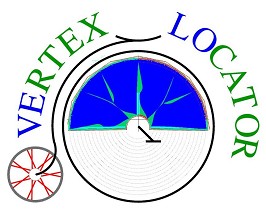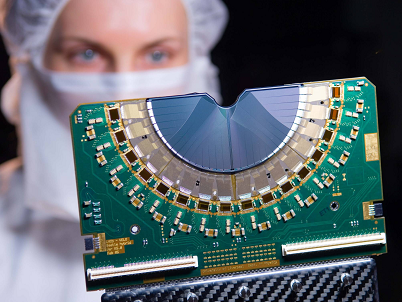 |
|
|
||||||||||||||||
|
|
|
 |
LHCb VELO ProjectThe VErtex LOcator is the part of the detector closest to the collisions at the LHC. Its sensitive elements are Si detectors and during operation these are only 8mm away from the beam. Its proximity to the interactions allows physicists to observe the decays of short lived particles, called B-mesons. The Bs have the property of decaying rapidly, in about one millionth of a millionth of a second. |
||||
 |
||||
|
As the Bs are travelling at more than 99% of the speed of light they actual travel ~ 1mm in the VELO before they decay. The very sensitive and accuracte sensors are designed to reconstruct the positions of the decays. The detectors surround the interaction point and provide a 3 dimensional “photograph” of the decay. |
||||
|
|
|
The VELO project has more than 50 collaborators from 6 countries from Europe and and North America. More general information about the VELO can be found at one of collaborators outreach site. The LHCb experiment also maintains public pages on the detector and VELO. |


